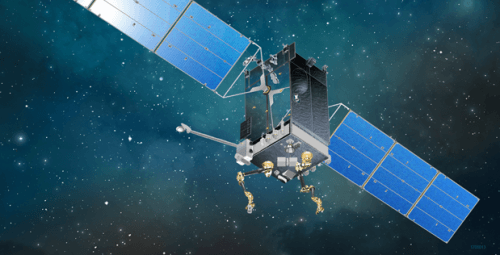The purpose of the program known as Phoenix is to develop and demonstrate technologies to extract and reuse valuable components from satellites that have ended their lives in geosynchronous orbit and to demonstrate the ability to create new space systems at a much lower cost

The Defense Advanced Research Projects Agency (DARPA - Defense Advanced Research Projects Agency) is developing technology for building satellites in space from components of satellites that have ended their lives, as part of a program known as Phoenix - when the satellites that have broken down live (including Amos 5 AB) will be resurrected if Thanks to renovation in space and if these will be their components that will be used to build new communication satellites.
(DARPA -) describes the Phoenix program: "The purpose of the Phoenix program is to develop and demonstrate technologies to retrieve and reuse valuable components from satellites that have ended their lives in geostationary orbit and to demonstrate the ability to create new space with much less expensive systems."
The agency's website explains that the traditional process of planning, developing, building and launching space systems is long, expensive and complex. These difficulties apply especially to a growing number of expensive satellites, for critical missions launched every year into the geosynchronous earth orbit (GEO), about 36 thousand km above the surface of the earth. Unlike low earth orbit (LEO) satellites, such as the Hubble Space Telescope, satellites in geosynchronous orbit are inaccessible with current technology.
DARPA's Phoenix program seeks to change this paradigm and reduce the cost of space-based systems by developing and demonstrating new satellite assembly architectures and delivery systems. The Phoenix currently focuses on two main research areas:
• Satlets: a new low-cost modular satellite architecture that can grow almost infinitely. The Satlets are small independent modules (they weigh approximately 7 kg) that integrate essential satellite functionalities (power supplies, motion controls, sensors, etc.) and also have the ability to share data, power and thermal management capabilities. Several such systems can be connected in various combinations that will provide capabilities to perform a wide variety of diverse space missions with any type, size or shape of satellite. Because they are modular, they can be produced on an assembly line at a low cost and quickly integrated with different chargers. DARPA is currently focused on validating the technical concept of satellites in LEO.
Payload Orbital Delivery (POD) - a standard mechanism designed to carry a wide variety of components including cargo, satellites and electronics - on commercial communication satellites. This approach would take advantage of the payload hosting services that commercial satellites currently provide, while providing a lower cost to launch into geosynchronous orbit.
The program sees many benefits, including:
• Improving satellite efficiency, lifespan, robustness and reliability
• Lower construction costs and launch costs
DARPA also announced the establishment of a consortium to carry out meetings and maintenance services in space" to harness the industry as well. The agency hopes that all the major companies in the field will join the consortium, including operators of geosynchronous satellites (mainly communication satellites) and companies engaged in preparation for launch that would also like to provide robotic maintenance services for satellites.
DARPA pioneered the concept experiments of using robots for repairs in space and recently invested millions of dollars in a public-private partnership with the Loral space systems company to build an autonomous spacecraft to service and maintain satellites at an altitude of 36 kilometers.

2 תגובות
I remember from Mazar Haim that years ago you brought up this idea of a cycle
It's called a satellite cycle